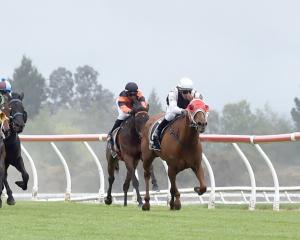The Government should help fund the construction of all-weather tracks in New Zealand, a meeting of South Island racing representatives was told in Oamaru yesterday.
Twenty clubs from around the mainland were represented at the meeting, which was held to discuss the 17 recommendations of the Messara report, a review of the New Zealand racing industry.
The report, written for the Government by Australian racing identity John Messara, was released in late August and outlined proposals to shake up the industry.
It suggested outsourcing the TAB's commercial activities to an international operator, reducing the number of thoroughbred racetracks from 48 to 28 and constructing new all-weather, synthetic tracks at Cambridge, Awapuni and Riccarton.
Speaking at the meeting on the subject of the all-weather tracks, moderator David Lloyd, who has a long association with the industry in several administrative roles, said that if the recommendation was adopted the process needed to be "done right".
He said $15 million to build the three tracks was "an awful lot of money" to invest into surfaces that had not been seen in New Zealand before.
New Zealand Thoroughbred Racing (NZTR) chief executive Bernard Saundry said it was hoped the Government would help fund the tracks.
Revenue from on-course turnover and subsidies was "nowhere near enough to meet the future demands of the industry", he said.
Tenders to construct the Cambridge track go out in about two weeks and it was likely initial construction would start in January.
Saundry said he would like to see a trial period of six months and if it was successful, he hoped the other two proposed tracks would be constructed in 2019 and 2020.
Tim Mills, of the Canterbury Jockey Club, supported the recommendation and said it was "part of the evolution of racing" that would "enhance racing in the South Island for the next 20 to 25 years".
Concerns were raised about drainage, ongoing maintenance costs and the impact of weather conditions on the tracks and how winter gallopers would cope on the surfaces.
The industry also needed to consider the impact the tracks may have on smaller trainers in rural areas, who would have to travel further to meetings in bigger centres.
Lloyd said track closures were "inevitable", but struggled to understand why shared tracks, such as Oamaru's, which is also used for harness racing, would be closed, a view echoed by many.
Saundry said NZTR was "not supportive" of the Messara report's position on track closure.
NZTR strongly supported 13 of the report's 17 recommendations.















